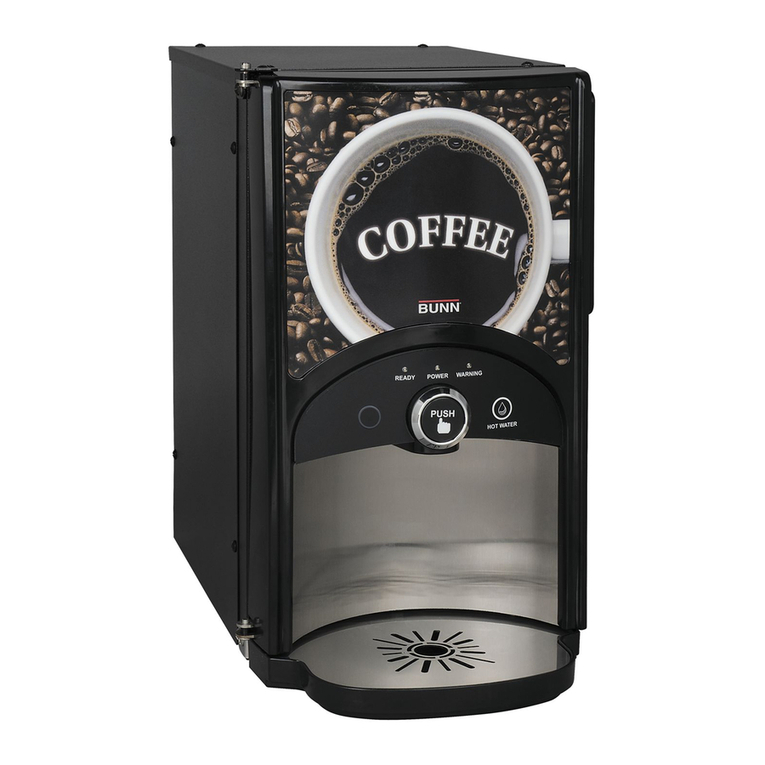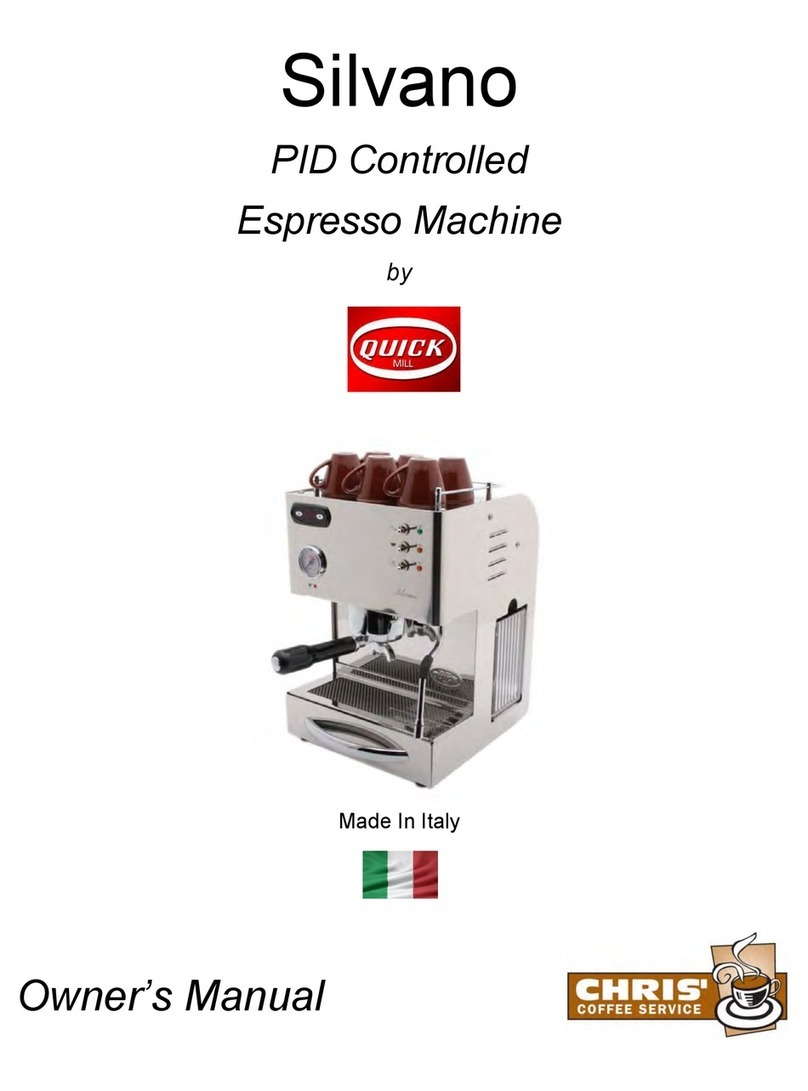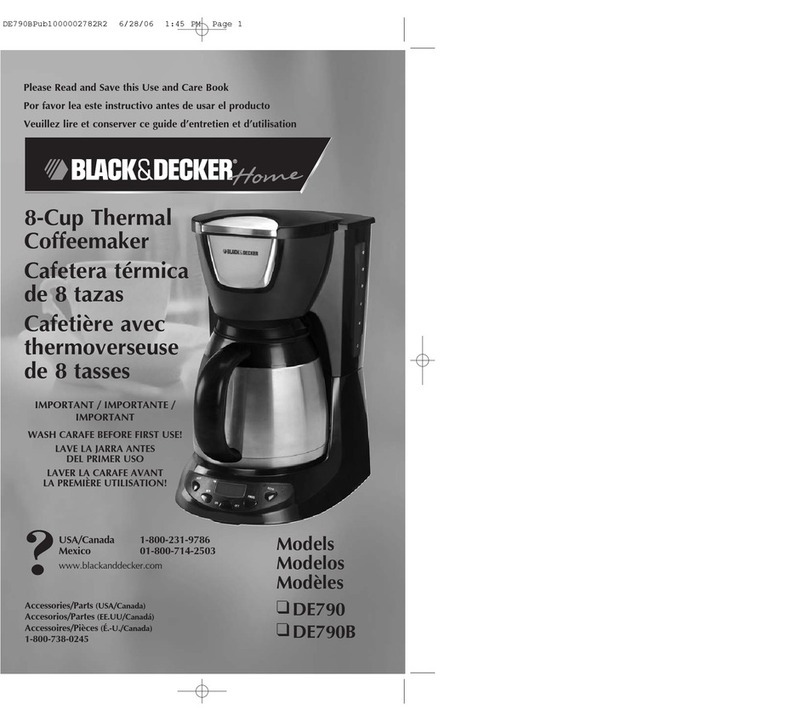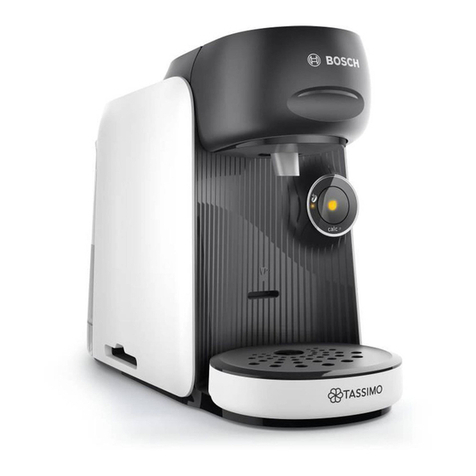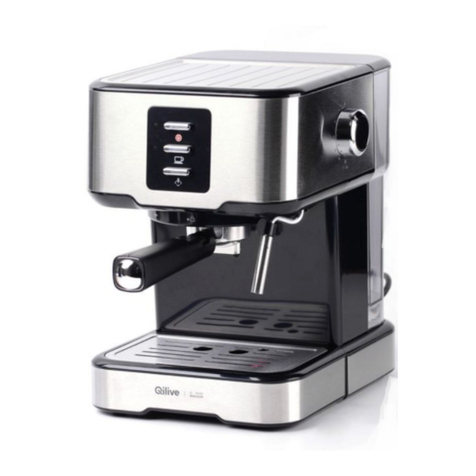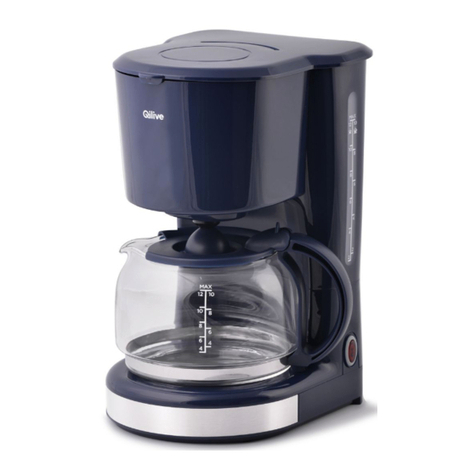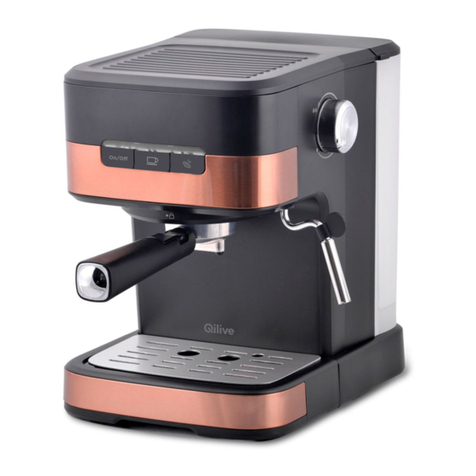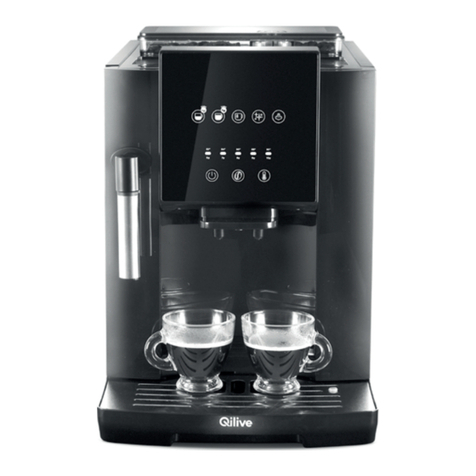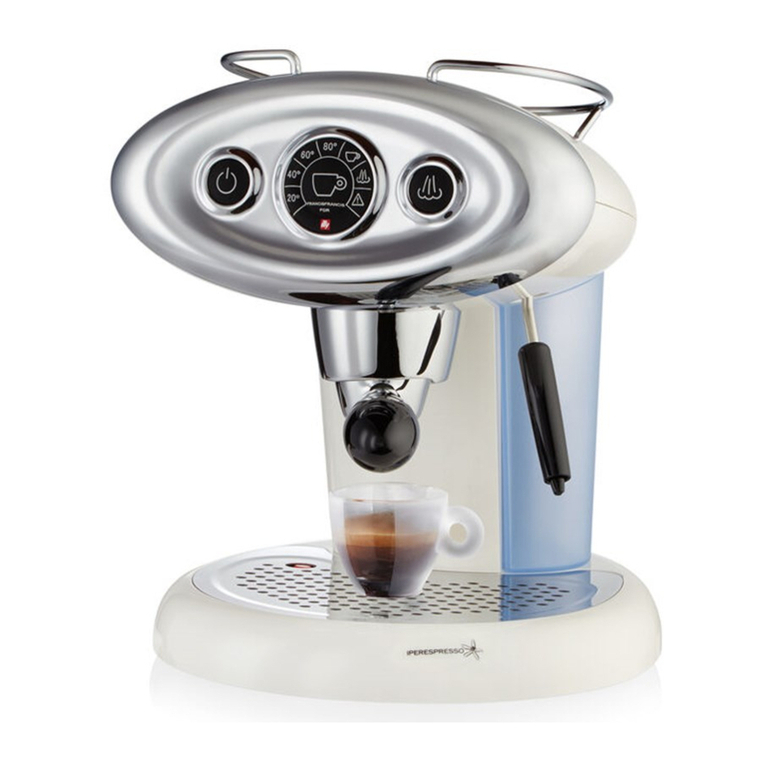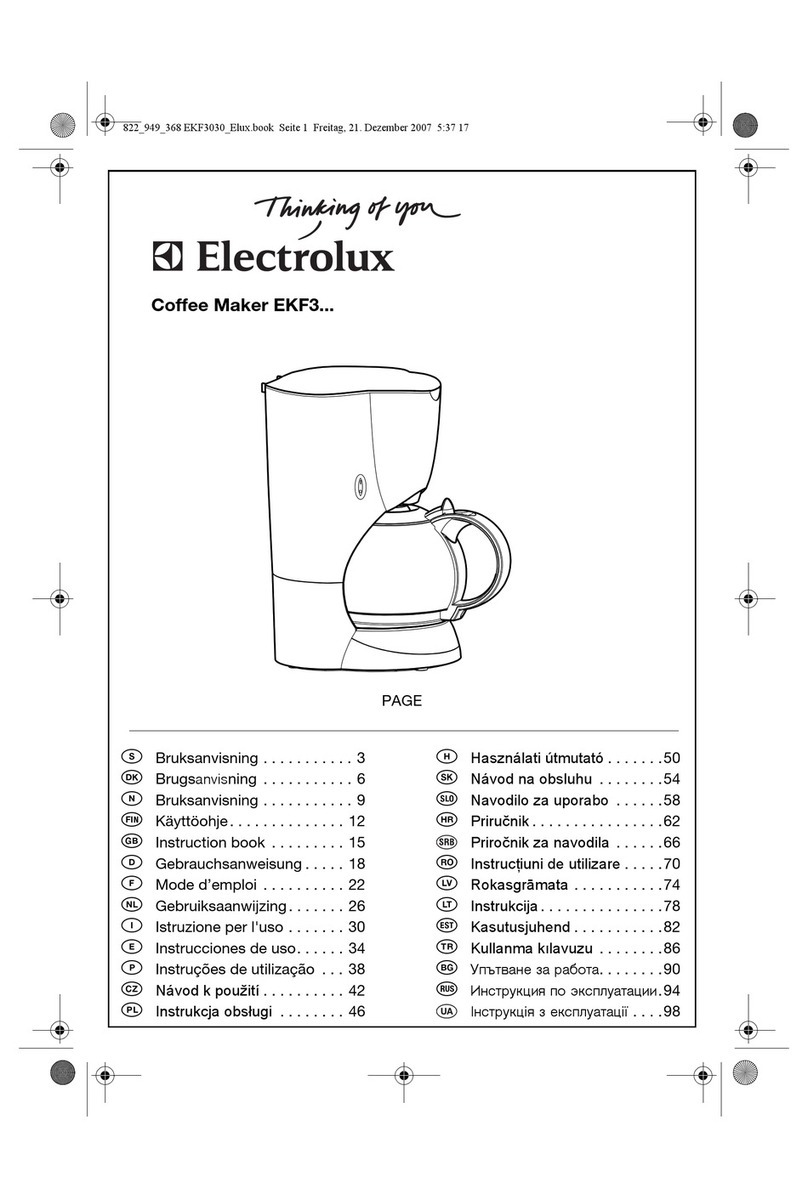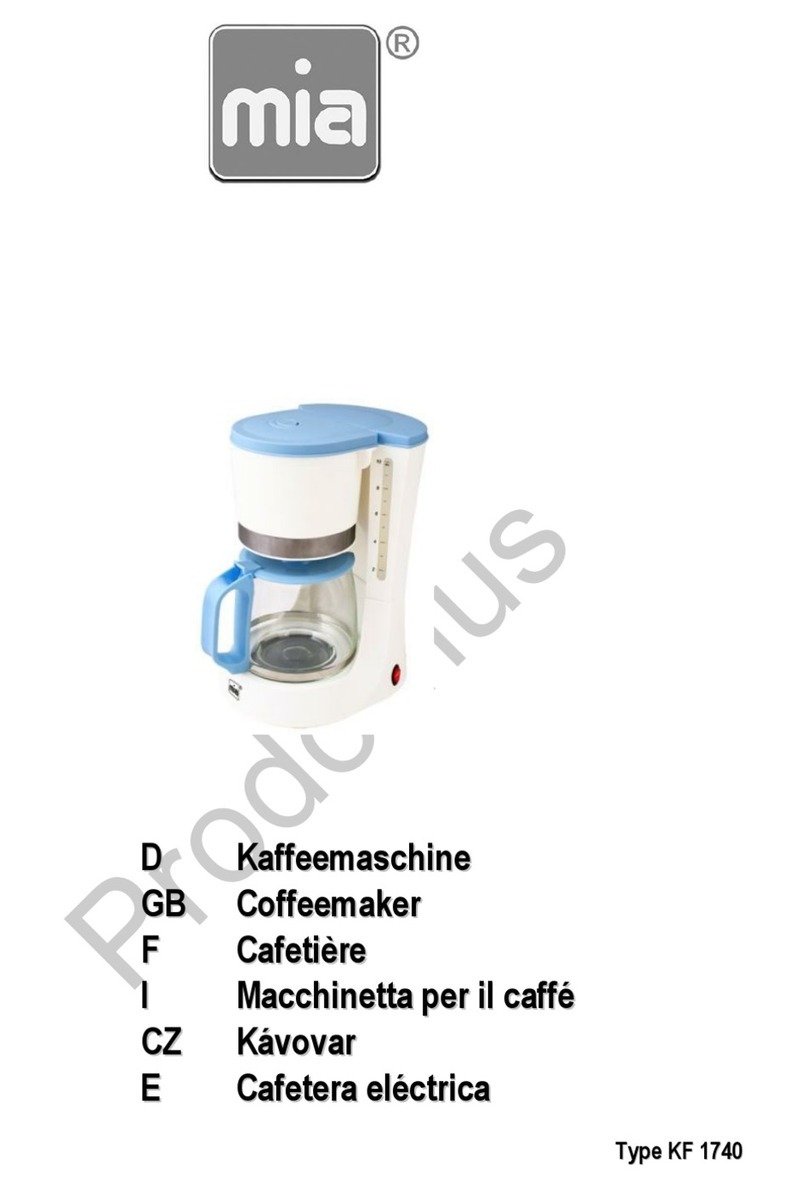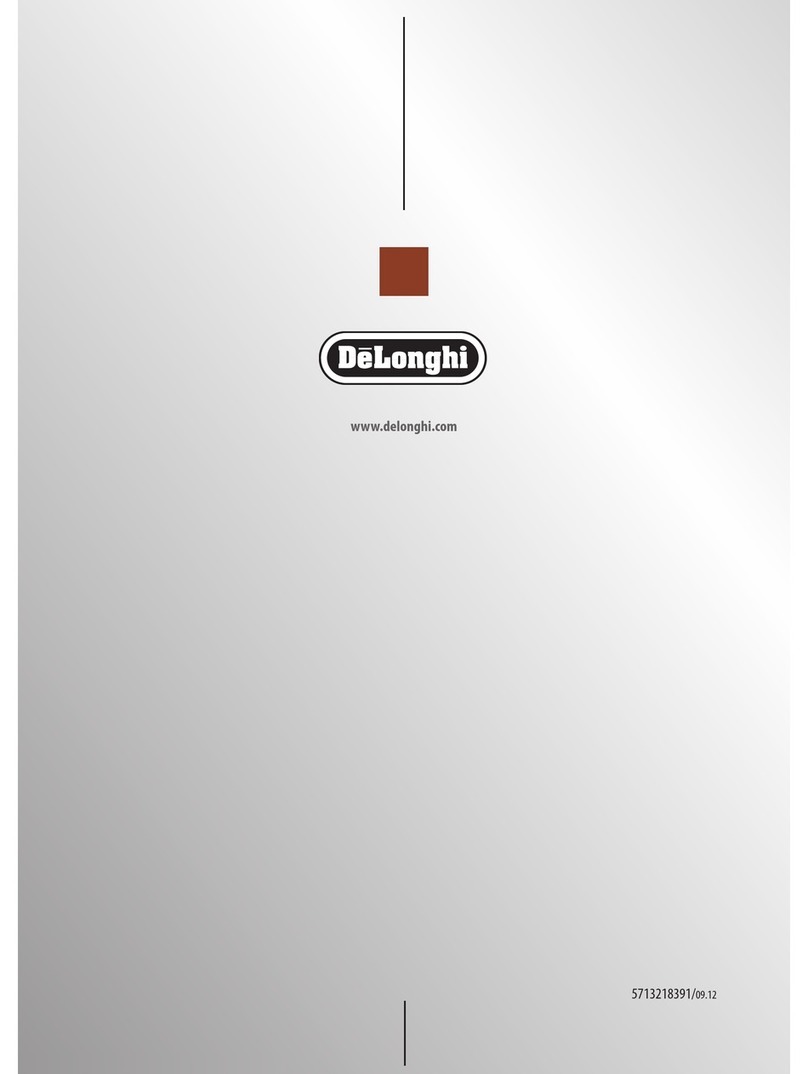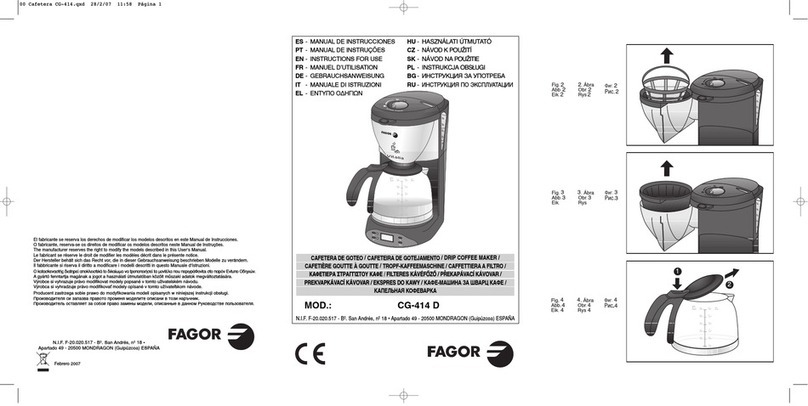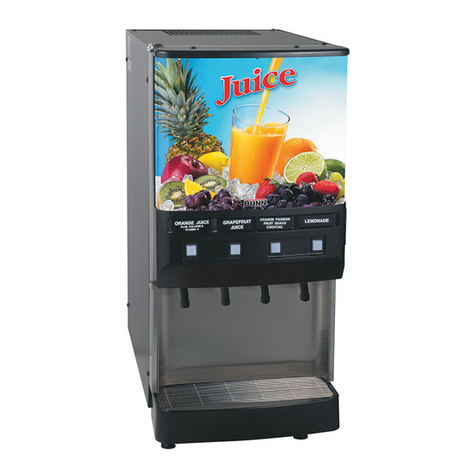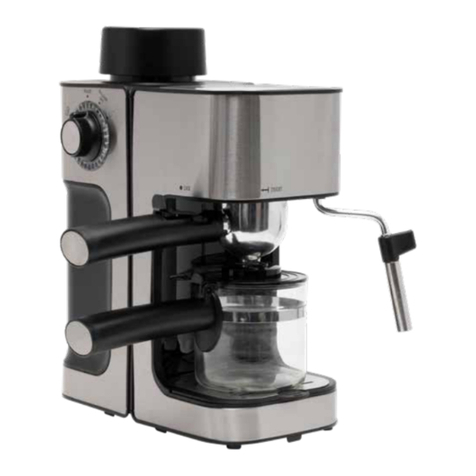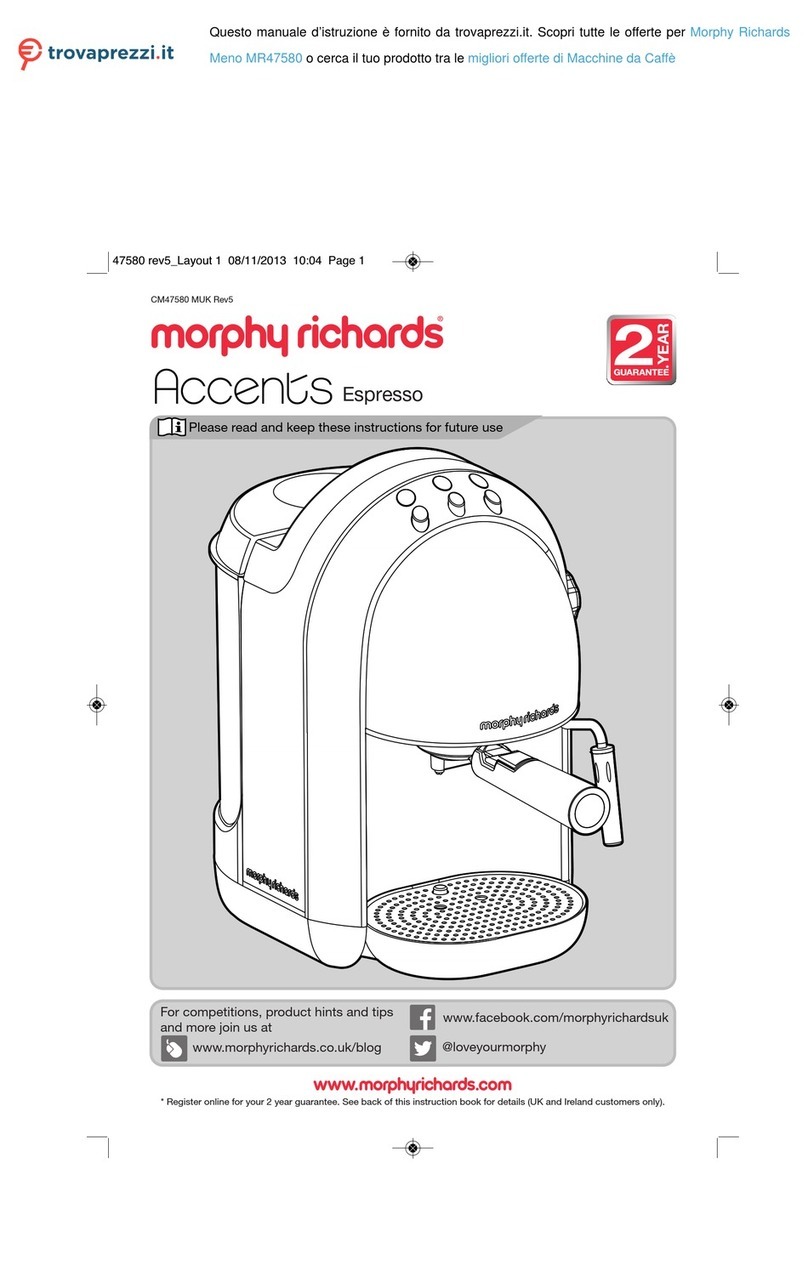
8
EN 12. Check and empty the drip tray regularly during use.
13. Once nished using the espresso machine, press the On/O button to turn the appliance o
and unplug it.
14. Allow the appliance to cool down before cleaning (→ CLEANING AND CARE).
5.3. FROTHING MILK FOR CAPPUCCINO
Add frothed milk to an espresso to make a cappuccino. The steam wand can be used to steam or
froth milk.
TIP: If you need to prepare several cups of cappuccino, prepare the espressos rst, then
froth the milk for the cappuccinos in a large jug. Bear in mind that the milk will double in
volume.
1. Prepare espresso in a cappuccino cup (→MAKING ESPRESSO).
2. Fill the frothing jug with about 100 g (approx. 100 ml) of whole milk or half-skimmed milk for
each cup of cappuccino to be prepared. It is recommended to use cold milk directly from the
fridge (not hot milk).
3. Hold the frothing jug and insert the steam wand into the milk about 2 cm deep.
4. Press the steam button and it will start to blink.
5. When the steam button stops blinking, slowly turn the steam control knob anti-clockwise to
start frothing the milk. The steam wand will produce steam. Use the steam control knob to
adjust the steam pressure.
6. Once the desired texture is obtained, turn the steam control knob clockwise to OFF and
remove the frothing jug.
7. To clean the steam wand:
■ Carefully wipe the steam wand with a soft damp cloth to prevent milk from sticking.
■ Place an empty jug under the steam wand, turn the steam control knob anti-clockwise
to produce steam for a few seconds. Then, return the knob to the OFF position. This
procedure purges any milk residue out of the steam wand.
8. Pour the frothed milk into the espresso. The cappuccino is ready to serve.
9. Once nished using the espresso machine, press the On/O button to turn o the appliance.
WARNING:
■Never leave the appliance unattended during use. Turn o the appliance after each use.
■Metal accessories and metal surfaces of the appliance become hot during use and
remain hot for some time after use. Do not touch hot surfaces. Always use handles
and knobs.
■Beware of hot water and escaping steam from the group head and steam wand during
normal use. Always keep your face and hands at a safe distance when using the
machine.
5.4. DISPENSING HOT WATER
■ Press the steam button to preheat the water.
■ When the steam button light becomes steady, place the steam wand into an empty jug and
carefully turn the steam control knob anti-clockwise.
■ When nished, turn the steam control knob clockwise to the OFF position.
5.5. SETTING THE DISPENSING AMOUNT
The amount of espresso that is dispensed can be changed.
■ Single cup - from 25 ml to 60 ml
■ Double cup - from 70 ml to 110 ml
1. Set the machine up to make espresso.
2. Press and hold for 3 seconds either the single-cup button or the double-cup button to enter
the setting mode.
3. Press the single-cup or double-cup button again to start dispensing espresso. The relevant
cup button will blink.
4. When the desired level is reached, press the single or double-cup button again to stop pouring
and save the newly set dispensing level.
